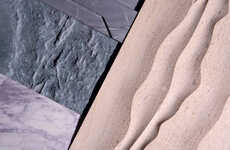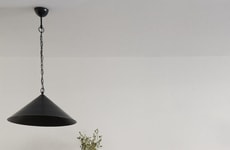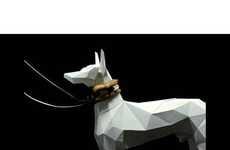
Henrique Oliveira's Materials Come From Sao Paulo Dumpsters
Marissa Brassfield — March 15, 2009 — Eco
References: henriqueoliveira & voiceyourtemper
Henrique Oliveira's eco art is comprised of plywood he sourced primarily from Sao Paulo dumpsters. The undulating forms are impressive, both in their size and overall aesthetic. Since most of the plywood comes from fences that have been dismantled, Oliveira's pieces are insights into both urban decay and the spirit of reuse.
The first four images come from Oliveira's 'Tapumes' exhibition at the Rice Gallery in Houston, Texas; the remainder are from Henrique Oliveira's past collections.
The first four images come from Oliveira's 'Tapumes' exhibition at the Rice Gallery in Houston, Texas; the remainder are from Henrique Oliveira's past collections.
Trend Themes
1. Sustainable Art - Using reclaimed materials from urban areas to create art challenges the traditional art world and promotes sustainable practices.
2. Upcycling Culture - The rise of upcycling culture not only reduces waste but also creates unique and marketable products with a smaller carbon footprint.
3. Diverse Art Forms - Exploring different art forms and unconventional materials can lead to innovative creations and redefine the definition of art.
Industry Implications
1. Art and Design - Artists, designers, and makers can adopt sustainable practices and utilize upcycling culture to create unique and marketable products.
2. Environmental Services - Environmental service providers can promote the importance of sustainability to their clients and offer consulting services to artists, designers, and makers to reduce the environmental impact in their work and practices.
3. Recycling and Waste Management - Recycling and Waste Management industries can support the upcycling culture by providing supply sources of reclaimed materials to artists and designers and improving the recycling infrastructures to reduce waste in urban areas.
3.1
Score
Popularity
Activity
Freshness























